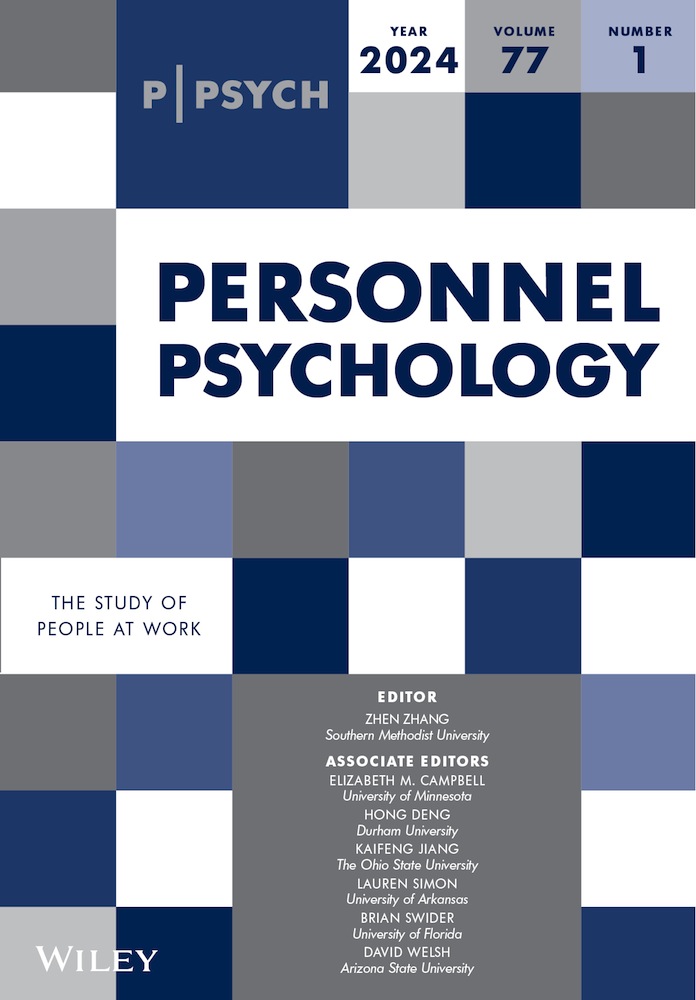组织投资者匹配:时间偏好在塑造投资者吸引力和组织绩效中的作用
IF 6.4
2区 心理学
Q1 MANAGEMENT
引用次数: 0
摘要
适合性是组织的一个重要考虑因素,广泛的研究已经探索了它的各种类型。我们在拟合研究的基础上,通过提出一种重要的拟合形式——组织投资者(O‐I)拟合来扩展拟合研究,这反映了组织与其投资者之间的兼容性。我们认为,投资者往往会被那些偏好已经“适合”自己的组织所吸引,并在这样做的过程中,为公司治理文献提供了一个关系视角,该文献通常将投资者和组织经理之间的关系视为纯粹的交易关系。我们关注的是影响组织和投资者行为的最重要因素之一——时间偏好的适合性。具体而言,我们认为投资者被符合他们时间偏好的公司所吸引,高O‐I适合度会带来更好的组织绩效。我们在对标准普尔500指数成分股公司的纵向档案研究中检验了我们的假设,并用两个实验补充了这些发现。我们共同发现了对我们的假设的有力支持。我们的研究展示了O‐I fit在塑造组织投资者构成及其后续绩效方面的关键作用,表明学者、管理者和投资者在这些关系中考虑fit带来的共同利益的价值。本文章由计算机程序翻译,如有差异,请以英文原文为准。
Organization‐investor fit: The role of temporal preferences in shaping investor attraction and organizational performance
Fit is an essential consideration for organizations, and extensive research has explored its various types. We build on and extend fit research by advancing an important form of fit—organization‐investor (O‐I) fit, which reflects the compatibility between an organization and its investors. We argue that investors tend to be attracted to organizations whose preferences already “fit” their own and, in so doing, provide a relational perspective to the corporate governance literature that often views the relationship between investors and organizational managers as purely transactional. We focus on the fit of one of the most important factors shaping both organizational and investor behavior––temporal preferences. Specifically, we argue that investors are attracted to firms that fit with their temporal preferences and that high O‐I fit leads to better organizational performance. We tested our hypotheses in a longitudinal archival study of S&P 500 firms and supplemented these findings with two experiments. Together, we find strong support for our hypotheses. Our study showcases the critical role of O‐I fit in shaping the makeup of an organization's investors and its subsequent performance, suggesting the value for scholars, managers, and investors to consider the mutual benefits offered by fit in these relationships.
求助全文
通过发布文献求助,成功后即可免费获取论文全文。
去求助
来源期刊

Personnel Psychology
Multiple-
CiteScore
10.20
自引率
5.50%
发文量
57
期刊介绍:
Personnel Psychology publishes applied psychological research on personnel problems facing public and private sector organizations. Articles deal with all human resource topics, including job analysis and competency development, selection and recruitment, training and development, performance and career management, diversity, rewards and recognition, work attitudes and motivation, and leadership.
 求助内容:
求助内容: 应助结果提醒方式:
应助结果提醒方式:


